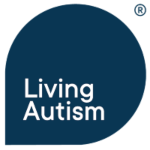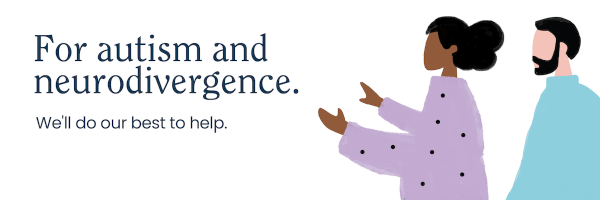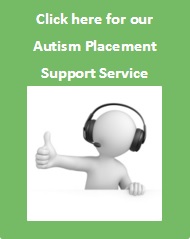As in the real world, there is no environment that is completely safe. As such we would ask anyone who uses the site to be careful and courteous. Registered users are encouraged to help make this a great resource, your contributions are greatly appreciated by ourselves us and by the wider autism community.
Please read our Bulletin Board Rules before you engage in discussions on this (or any) site. In particular, please note that we reserve the right to remove any contribution which we deem to be potentially defamatory or any person, unlawful or in violation of any third party rights.
The current internet experience is represented by a shift away from a static model toward being more dynamic. Content is very often user generated, uploaded and shared easily with others and within communities, in jargon this is known as Web 2.0. Users can interact with each other across multiple platforms and devices, such as mobile phones, blackberries, game consoles and PCs and when used non-maliciously it’s a fantastic technology that is revolutionising the way people connect. But it also has the potential to expose vulnerable people to new risks if they are not careful.
Whilst we encourage people to share useful information, we would also like to point out some risks and precautions to be aware of when ‘social networking’ on this site or any other.
What is Social Networking?
Any website that allows users to create their own content, share it with individuals, and potentially with the world can be classed as ‘social networking’.
There are a lot of services full of user-generated content. Some examples of popular services include: Facebook, Bebo, Flickr, Friends Reunited, Hi5, LinkedIn, MySpace, Piczo, Twitter and Yahoo! 360° there are new ones sprouting up all the time.
Other services focus on particular features or themes, such as sharing media YouTube, Daily Motion, AOL Uncut, Grouper, iFilm, Google Video and See Me TV. These have similar characteristics to social networking services, in that a user profile is required and there is the ability to interact with others.
The websites vary in terms of audience, features and the range of activities that users can engage in; but common themes include:
- Personalising: using graphics, colour, music and images to represent the user’s unique style and identity
- Interaction with friends in real time through instant messaging, message boards and chat rooms
- Connecting with known friends and making new friends
- Uploading and sharing images & photos of themselves, their family and friends;
- Creating ‘blogs’ (an online diary), journals or diaries about their lives
- Sharing thoughts and information on areas of interest ; receive comments or messages on their personal websites from friends or guests;
- Creating or joining wider communities or interest groups, e.g. football or music or indeed autism.
Interactive services have also developed around specific communities of interest and are very popular with children and young people. Children and young people tend to use social networking and interactive sites as an extension of their own lives, and many do not distinguish between the online and offline environments and this can be problematic at times.
Social Networking children, young people and vulnerable adults
‘It is a normal part of adolescence to test boundaries, challenge adult norms, experiment with relationships, play with identities, explore new sexual experiences, keep or break secrets, exclude or be excluded by peers, deceive parents and worry about one’s development. All this is to be expected online, as it is offline. But online, such practices may be spread, manipulated or shared in ways that are easier, quicker, and possibly unexpected in their consequences, compared with offline practices.
‘Home Office Task Force on Child Protection and the Internet: Good practice guidelines for the providers of social networking and other user interactive services 2008’
Being aware of the risks
So what are the risks to young and vulnerable people? This fairly exhaustive list is again taken from the ‘Home Office Task Force on Child Protection and the Internet: Good practice guidelines for the providers of social networking and other user interactive services 2008’
Risks of ‘peer to peer’ harassment
- Bullying by peers and people they consider ‘friends’;
- Exposure to inappropriate content, sexual, racist or hate material;
- Encouragement of violent behaviour; or self harm
- Physical harm to young people in making video content, such as enacting and imitating stunts and risk taking activities; and
- Glorifying activities such as drug taking or excessive drinking;
Exposure to ‘real world’ risks
- Posting personal information that can identify and locate a child or vulnerable person offline;
- Theft of personal information;
- Involvement in making or distributing illegal or inappropriate content;
Exposure to Exploitation
- Sexual grooming, luring, exploitation and abuse contact with strangers;
- Leaving and running away from home as a result of contacts made online.
Online grooming and sexual exploitation of children and young people
There is also concern that the capabilities of social networking services may increase the potential for sexual exploitation of children and young people. Exploitation can include exposure to harmful content, including adult pornography and illegal child abuse images. There have also been a number of cases where adults have used social networking and user interactive services as a means of grooming children and young people for sexual abuse.
Techniques used by predators include:
- Gathering personal details, such as age, name, address , mobile number, name of school and photographs;
- Asking sexually themed questions, such as ‘Do you have a boyfriend?’ or ‘Are you a virgin?’ or sending sexually themed images
Predators are able to use the internet to financially entice vulnerable people:
- Offering cheap tickets to sporting or music events;
- Offering material gifts including electronic games, music or software;
- Paying young people to appear naked and perform sexual acts;
- Promising meetings with sports idols or celebrities or offers of merchandise;
Cases of coercion, deception and impersonation have also been reported:
- Bullying and intimidating behaviour, such as threatening to expose the child by contacting their parents to inform them of their child’s communications or postings on a social networking site,
- Saying they know where the child lives, plays sport, or goes to school;
- Masquerading as a minor or assuming a false identity on a social networking site to deceive a vulnerable person; please note that these can be extremely convincing with fake photos, chat histories etc.
- Using school or hobby sites (including sports) to gather information about a child’s interests likes and dislikes.
Sensible precautions we can all take
Most social networking sites set a child’s webpage/profile to private by default to reduce the risk of personal information being shared in a public area of the site, even for adults reducing the amount of information that is available to everybody is often a sensible move.
It is important to remind any young or vulnerable person who uses the internet or other communication technology of the following:
1. Explore the privacy settings of your social networking site to protect your privacy
- For a range of online tutorials, go to http://www.kidsmart.org.uk/skills-school/
- Facebook users can download a Child Exploitation and Online Protection Agency (CEOP) application to their Facebook page at http://apps.facebook.com/clickceop
2. Ask friends and family to have a look at your social networking site to check that you aren’t giving out too much personal information or posting inappropriate photos/films.
3. Keep your passwords to yourself.
4. Respect yourself and others online.
5. Do not accept ‘friend’ or contact requests from strangers, even if their profiles look innocent.
6. Be very cautious when meeting someone you have met on the internet in the ‘real world’. Try to validate that they are who they say they are ‘offline’ (such as through a mutual friend) before agreeing to meet.
What to do if you suspect ‘foul play’ or experience cyber-bullying
If you are unlucky enough to have a bad experience, online report it to the service provider and tell a trusted person. Cyber-bullying is never acceptable. If you or someone you know is targeted by bullies online, tell them to:
- Report the bully to the website/service operator
- Keep evidence of the bullying behaviour
- Resist the temptation to reply to nasty messages
- Tell a trusted person
- ‘Unfriend’ bullies / delete them from your contacts, if they persist – it may be necessary for you to delete your own profile and ‘start again’
In the case of serious online crime threatening vulnerable people, you should report it to the Child Exploitation and Online Protection Centre: www.ceop.police.uk



